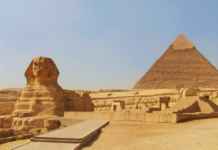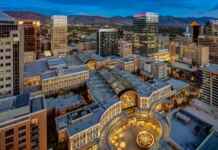In the middle of the beautiful Italian city of Rome is a marvellous structure called the Colossuem. Also known as the Flavian Amphitheatre, this magnificent structure is one of the greatest works of Roman architecture and engineering, not to mention an important part of the history that connects us to the culture and power of the Roman Empire that existed centuries ago making the Colosseum an important icon of the Imperial Roman Empire. Built of concrete and stone, the Colosseum is the largest amphitheatre in the world.
Its construction was started by Emperor Vespasian in 70 A.D. and completed under Emperor Titus in 80 A.D. It was named the Flavian Amphitheatre a after the family name of the emperors who built it. During the Roman Empire, the Colosseum was used to hold gladiatorial contests and many public spectacles like mock sea battles, animal hunts, executions and dramas. It could hold up to 80,000 eager spectators for whom the Colossuem was the most popular and perhaps the main source of entertainment.
The gladiatorial shows called the “Munera” were given by private individuals as a demonstration of power and prestige and were immensely popular with the local population. Animal hunts or “Venatio” was another popular type of show where many exotic animals like rhinoceroses, elephants, giraffes, panthers and leopards werebrought in from various parts of Africa and the Middle East for elaborate shows that even involved movable trees and buildings. Sylvae, or recreation of natural scenes were also done in the arena. The most brilliant painters, technicians and architects or Rome would come together to construct a simulation of a real forest with real trees and bushes. These would then be held to give the urban population a feel of the forests or as backdrop for hunts and or dramas.
Over the years, the use of the Colosseum has been redefined with changing times. During the medieval period, the Collosseum underwent some radical changes. Its arena was converted into a cemetery. The vaulting spaces in the arcade were converted into housing and workshop. Apparently in the start of the 13th century, the Colosseum was even used as a castle. During the 16th and 17th century, the Catholic Church had plans to use the Colosseum as a wool factory and later for staging bullfights but neither of the two plans ever saw the light of day.
Today the Colosseum serves as the most popular tourist attraction of Rome, receiving millions of visitors over the years. It has a museum dedicated to Eros, the Greek God of Love, located on the upper floor of the outer wall of the building. Beneath the Colosseum is a network of subterranean passageways that once used to transport wild animals and gladiators have now been opened to public.
The Colosseum is also the site of Roman Catholic ceremonies in the 20th and 21st century. In more recent times, many large concerts have been held outside the Colosseumm using it as a backdrop. International celebrities such as Ray Charles, Paul McCartney, Elton John and Billy Joel have performed there.
This magnificent building is a testament to the strength of the Imperial Roman that has lived on through the ages to tell the stories of the lives connected to it.













